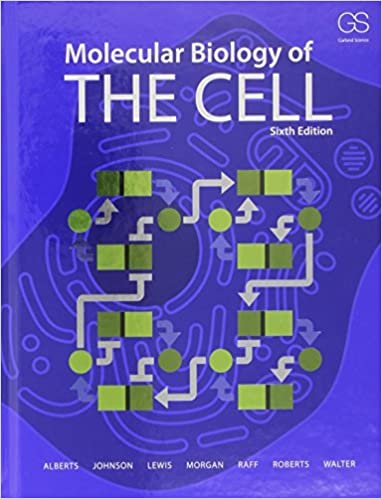
Molecular Biology Of The Cell 6th Edition by Bruce Alberts, Alexander Johnson, Julian Lewis, David Morgan, Martin Raff, Keith Roberts, Peter Walter
Edition 6ISBN: 978-0815345244
Molecular Biology Of The Cell 6th Edition by Bruce Alberts, Alexander Johnson, Julian Lewis, David Morgan, Martin Raff, Keith Roberts, Peter Walter
Edition 6ISBN: 978-0815345244 Exercise 6
The laboratory you joined is studying the life cycle of an animal virus that uses circular, double-strand DNA as its genome. Your project is to define the location of the origin(s) of replication and to determine whether replication proceeds in one or both directions away from an origin (unidirectional or bidirectional replication). To accomplish your goal, you broke open cells infected with the virus, isolated replicating viral genomes, cleaved them with a restriction nuclease that cuts the genome at only one site to produce a linear molecule from the circle, and examined the resulting molecules in the electron micro- scope. Some of the molecules you observed are illustrated schematically in Figure Q5-1. (Note that it is impossible to distinguish the orientation of one DNA molecule relative to another in the electron microscope.) You must present your conclusions to the rest of the lab tomorrow. How will you answer the two questions your advisor posed for you? Is there a single, unique origin of replication or several origins? Is replication unidirec- tional or bidirectional? 
A. Explain why, in both experiments, some regions of the tracks are dense with silver grains (dark), whereas oth- ers are less dense (light). b. In the first experiment, each track has a central dark section with light sections at each end. In the second experiment, the dark section of each track has a light sec- tion at only one end. Explain the reason for this difference.
C. Estimate the rate of fork movement in these experiments. Do the estimates from the two exper- iments agree? Can you use this information to gauge how long it would take to replicate the entire genome?
in these experiments. Do the estimates from the two exper- iments agree? Can you use this information to gauge how long it would take to replicate the entire genome? 

A. Explain why, in both experiments, some regions of the tracks are dense with silver grains (dark), whereas oth- ers are less dense (light). b. In the first experiment, each track has a central dark section with light sections at each end. In the second experiment, the dark section of each track has a light sec- tion at only one end. Explain the reason for this difference.
C. Estimate the rate of fork movement
 in these experiments. Do the estimates from the two exper- iments agree? Can you use this information to gauge how long it would take to replicate the entire genome?
in these experiments. Do the estimates from the two exper- iments agree? Can you use this information to gauge how long it would take to replicate the entire genome? 
Explanation
Autoradiography is a technique to determ...
Molecular Biology Of The Cell 6th Edition by Bruce Alberts, Alexander Johnson, Julian Lewis, David Morgan, Martin Raff, Keith Roberts, Peter Walter
Why don’t you like this exercise?
Other Minimum 8 character and maximum 255 character
Character 255


